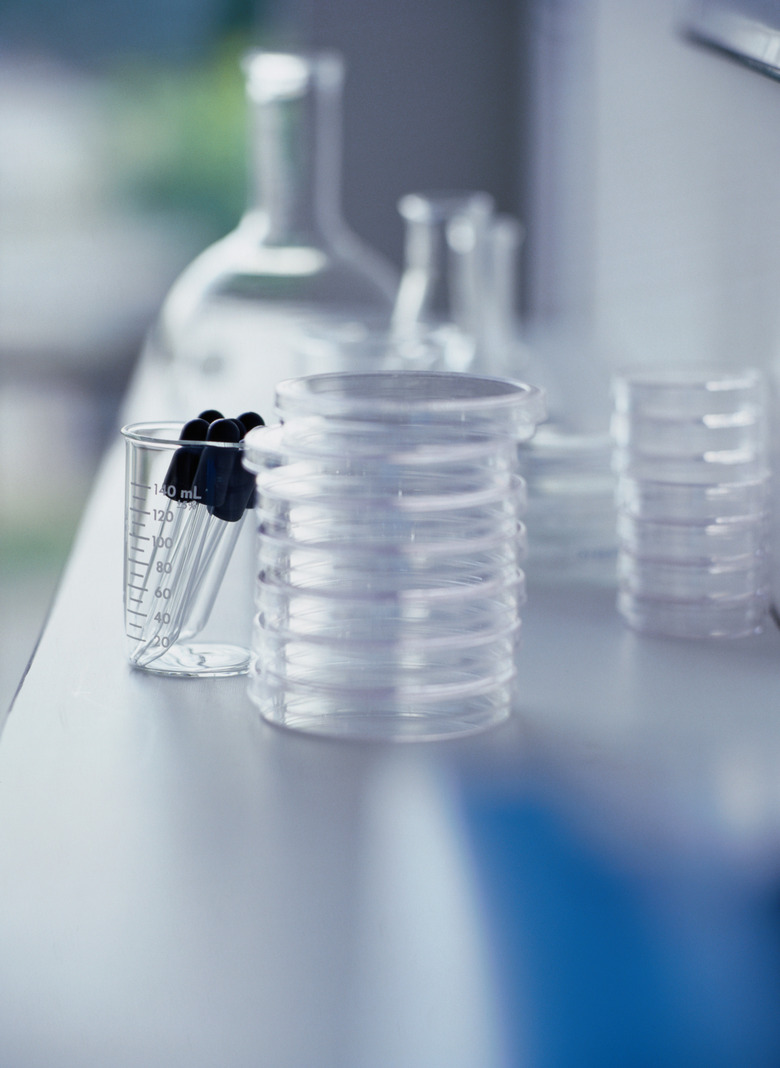What Could Be Used To Sterilize Plastic Petri Plates In A Plastic Wrapper?
When scientists conduct microbiology experiments, they need to make sure that no unexpected microorganisms are growing in their petri dishes and test tubes. The process of killing or removing all microbes capable of reproduction is called sterilization, and it can be accomplished by both physical and chemical methods. For pre-wrapped petri dishes, however, the most effective technique is exposure to ionizing gamma radiation or electron beams.
Shooting for Sterilization
Shooting for Sterilization
After the petri dishes are placed in their final plastic wrapping, they are blasted with a high-energy beam of either gamma radiation, which is generated from a radioactive element such as cobalt-60, or electrons, which are produced by an electron accelerator. When these beams hit the microorganisms, they damage their DNA sequences, causing mutations that render the microbes unable to reproduce.
Cite This Article
MLA
Walton, Daniel. "What Could Be Used To Sterilize Plastic Petri Plates In A Plastic Wrapper?" sciencing.com, https://www.sciencing.com/could-used-sterilize-plastic-petri-plates-plastic-wrapper-15688/. 24 April 2017.
APA
Walton, Daniel. (2017, April 24). What Could Be Used To Sterilize Plastic Petri Plates In A Plastic Wrapper?. sciencing.com. Retrieved from https://www.sciencing.com/could-used-sterilize-plastic-petri-plates-plastic-wrapper-15688/
Chicago
Walton, Daniel. What Could Be Used To Sterilize Plastic Petri Plates In A Plastic Wrapper? last modified March 24, 2022. https://www.sciencing.com/could-used-sterilize-plastic-petri-plates-plastic-wrapper-15688/
